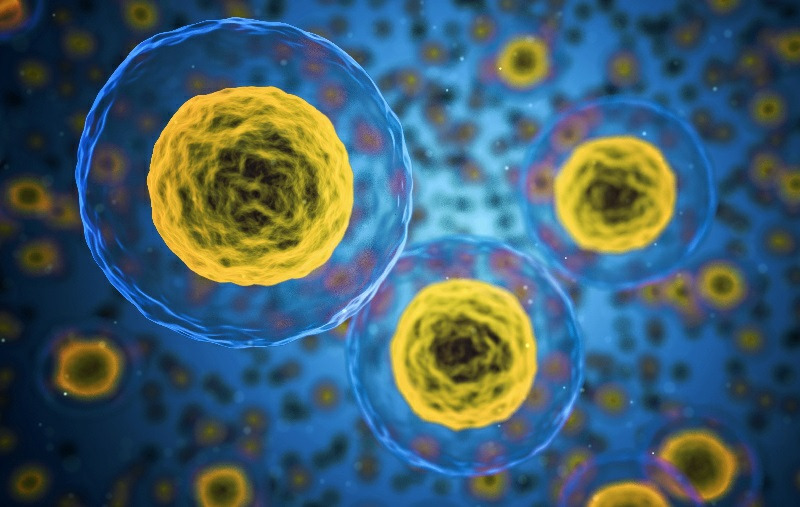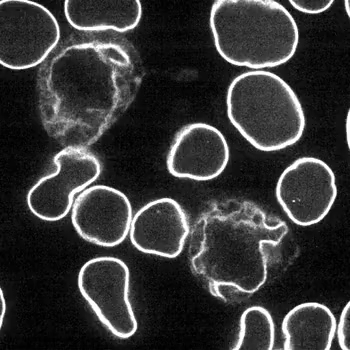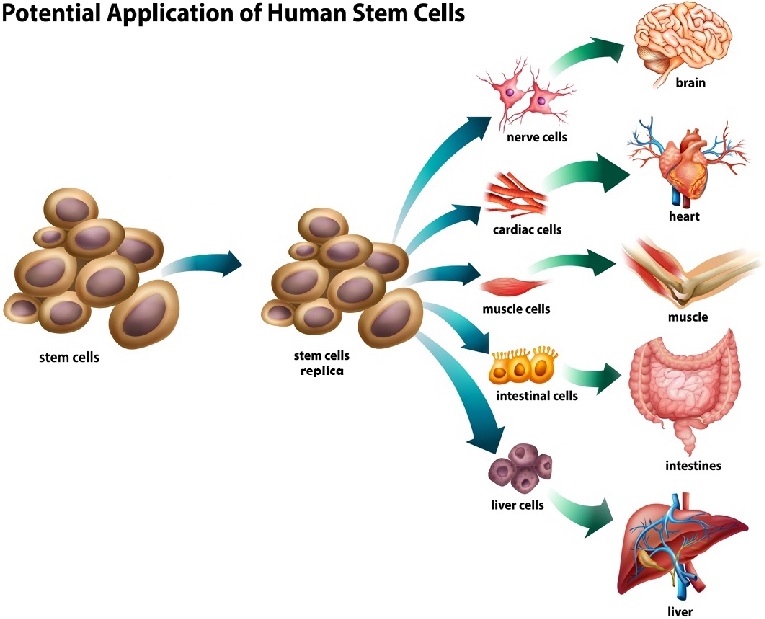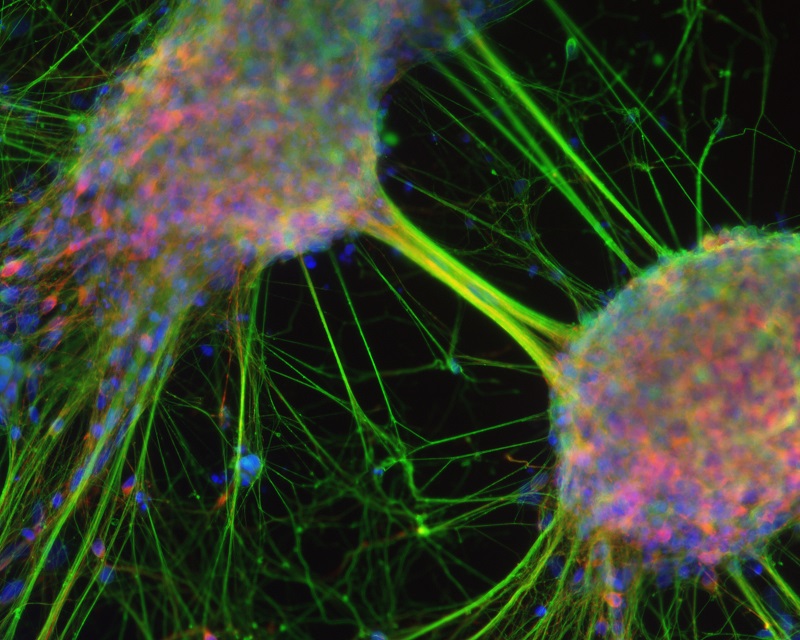Can We Reverse Stem Cell Decline and Rejuvenate Our Bodies? (Part 1)
Summary: Stem cell decline leads to disease, gradual organ failure, and death. Learn what causes it and how researchers are trying to reverse stem cell decline. This is part 1 of a two-part series – part 2 of the series on stem cell decline is here. This article first appeared on LongevityFacts.com, follow us on Google+ | Facebook | Reddit. Author: Brady Hartman.
Are stem cells the fountain of youth?
Recent discoveries suggest that stem cells may be able to regenerate most of our organs in the near future. Using regenerative medicine, death and disability from organ failure will soon be a relic of the past. Gone too will be the failures associated with organ transplantation. Using stem cell therapy, our declining immune systems will be restored, no longer compromised by old age. Finally, stem cells can minimize the dysfunction and mortality associated with infectious diseases.
According to a review published early this year in the World Journal of Experimental Medicine, our body’s stem cells deteriorate with age, and this stem cell decline causes loss of function and disease. As the authors of the review say,
As stem cells age, their renewal ability deteriorates and their ability to differentiate into the various cell types is altered. Accordingly, it is suggested aging-induced deterioration of stem cell functions may play a key role in the pathophysiology of the various aging-associated disorders.
There is hope, as researchers are developing ways to reverse stem decline, as the authors of the review state,
[This review] also briefly discusses the current potential therapies under development for aging-associated stem cell defects.
The potential of stem cells as a panacea for all types of age-related diseases has been widely touted by newspapers and other mass media. However, these claims need to be tempered by a careful assessment of the possible roles of stem cells during aging and disease.
Unlike the regular cells that make up our body, stem cells can divide forever and can also develop into specialized tissues. Stem cells are not only active in embryos but aid us throughout our entire lives, replacing worn and damaged tissues. Not all of our stem cells decline. While stem cells are mostly found in developing embryos, recently scientists have discovered adult stem cells in humans.

Stem Cell Decline
How does stem cell decline cause disease and aging?
The short answer is that stem cells – the body’s repairmen – become tired and lazy as they grow old.
The cells in our bodies run the systems that are necessary for our survival. From time-to-time, we lose some of these cells due to disease and damage and stem cells can generate replacements. Stem cells can divide without limit and can transform into heart, blood, liver or brain cells, and any all other types of human cells. However, as we age our stem cells decline in their abilities to divide and produce new cells.
What Causes Stem Cell Decline?

Stem cell decline may result from stem cell burn out— a result of having divided too many times over the course of a decade. Other possible contributors to this decline include accumulated DNA damage in stem cells or a reduction in signals called factors which tell our stem cells when to divide.
Product of Their Environment
Another reason for stem cell decline could be that they live in a bad neighborhood. A recent discovery showed that aging stem cells do just fine when taken from a dysfunctional environment, also called a niche, and then transplanted into a healthy niche.
Perhaps one day we can reverse stem cell decline and rejuvenate our bodies simply by taking drugs which revitalize the blood factors.
Stem Cell Decline Causes Dysfunction and Aging
The upshot of stem cell decline is that our organs have a finite lifespan. In fact, a major hallmark of aging is the inability of our bodies to replace aging tissues principally due to stem cell decline. However, researchers speculate that they can manipulate adult stem cells and reset them to a more youthful state, thus countering stem cell decline. If harnessed, this fountain of youth could rejuvenate our tissues and organs, increasing the number of healthy years in our lives.

Reversing Stem Cell Decline With Regenerative Medicine
Scientists believe that, in the near future, stem cells can be used in an application called regenerative medicine. Regenerative medicine counters tissue lost due to damage, disease and stem cell decline. Researchers believe that with the proper use of stem cells, they can regenerate most of our organs and rejuvenate our age–compromised immune systems.
Regenerating Organs Lost Due To Disease or Stem Cell Decline
The most exciting potential use of stem cells is an application of regenerative medicine called stem cell therapy. If we didn’t have stem cell decline, whenever we lost organs or limbs we could regenerate new ones in the same manner as a lizard. In stem cell therapy, doctors treat a disease by replacing damaged or dead tissue with fresh stem cells. Currently, physicians transplant donor organs and tissues to replace damaged ones, however, the supply of donor organs is limited. Researchers speculate that stem cell therapy might treat a variety of diseases including Parkinson’s, Alzheimer’s, stroke, spinal cord injury, heart disease, diabetes, rheumatoid arthritis, and osteoarthritis.
Doctors could culture sufficient numbers of multipotent stem cells and grow them into replacement organs. Doctors could use these lab-grown organs in place of donor organs in transplantation. If stem cell therapy is successful, regenerative medicine will reduce the need for organ and tissue transplants.
In fact, scientists have used stem cells to grow beta cells to create an artificial pancreas in a box for patients with type 1 diabetes.

Reversing Alzheimer’s and Parkinson’s Diseases With Stem Cells
Going one step further, researchers believe that stem cells may help those suffering from Alzheimer’s or Parkinson’s disease. One day, physicians may be able to infuse stem cell-derived neurons into the hippocampus and other areas to reverse age-related declines in memory and motor coordination. This particular form of stem cell therapy may be more straightforward in Parkinson disease, in which specific dopaminergic neurons degenerate, than in Alzheimer’s Disease and other brain diseases that have a higher amount of diffuse neuron loss.

Stem Cell Therapies Already in Use
Physicians are already practicing stem cell therapy to restore damaged bone marrow. In the treatment of certain cancers, chemotherapy destroys all of the cells in the bone marrow, including the stem cells that reside there. Chemotherapy and radiation therapy destroy a patient’s existing hematopoietic system, a body-wide system that maintains bone marrow, blood cells and the immune system.
After cancer treatment, doctors transplant fresh stem cells obtained from donated bone marrow or umbilical cord blood to restore those destroyed by the cancer treatment. To restore the bone marrow and the stem cells, doctors transplant a small volume of bone marrow from healthy donors which eventually gave rise to enough stem cells to repopulate the body with white blood cells, red blood cells, and platelets.
Hematopoietic stem cell transplants have aided patient recovery in many cancers, including Hodgkin’s and Non-Hodgkin’s lymphoma, leukemia, neuroblastoma, brain tumors, multiple myeloma, aplastic anemia, sarcoma as well as breast, ovarian and testicular cancers.
Hematopoietic stem cells are unique in that they are easy to remove from living humans for transplantation. However, researchers believe they could adapt this procedure to transplant other multipotent adult stem cell types.
Obtaining Fresh Stem Cell Replacements
Because our stem cells decline with age, doctors need to transplant stem cells that can regenerate the tissue of the desired organ. Hematopoietic stem cells are not the only cells that can regenerate. Multipotent stem cells also have this ability and can be obtained from other adult human organs.
The ultimate goal of scientists is to obtain stem cells that can produce all possible adult tissues.
Doctors obtain these cells from two major sources: a) the pluripotent stem cells of human embryos and b) cells harvested from living adult humans and reprogrammed into an embryonic state.
Note: Feel free to consult this link for a primer on stem cells. In the primer, you can learn more about the differences between multipotent, pluripotent and adult stem cells as well as other facts about stem cells.
Obtaining Pluripotent Stem Cells
Physicians can obtain pluripotent stem cells from embryonic stem cells, getting them from fertilized embryos that have been left over from IVF procedures, or from terminated pregnancies. These sources of stem cells are plagued by controversy and subject to strict federal guidelines. Researchers can only use them with the explicit and informed consent of the donor couples.
Reprogrammed Adult Cells
Reprogrammed adult cells are the second source of pluripotent stem cells. Scientists create reprogrammed adult cells through a process called somatic cell nuclear transfer. The nucleus is where the action is because it is the part of the cell that contains the DNA in the form of genes and chromosomes. In this process, researchers remove the nucleus from an unfertilized human egg cell. Next, they manipulate an ordinary human cell, called a somatic cell, to incorporate its nucleus into the egg. This hybrid cell appears to have the potential to develop into a human.
Other Ways to Obtain Pluripotent Stem Cells
Scientists have identified alternative ways to reprogram adult cells into a pluripotent state without the need to transplant them into an egg. This research raises the exciting possibility that we could eventually take almost any cell from any adult and transform it into a rejuvenated stem cell. The result is a stem cell that can regenerate healthy new cells.
Future of Stem Cell Production
Researchers are trying to solve the problem of producing large numbers of stem cells in the laboratory. Scientists harvest stem cells in small quantities; they then need to be cultured in a laboratory setting so that large volumes of them can be produced.
Realities of Stem Cells and Regenerative Medicine
The media has hyped the potential of stem cells as a panacea for all types of age-related diseases. However, these claims need to be tempered by a careful assessment of the possible roles of stem cells during aging and disease. However, we may need fresh stem cells after all. In fact, researchers are increasingly starting to realize that stem cell decline is due to the niche of the stem cell. In other words, stem cell decline may simply be the result of the stem cell ‘living in a bad neighborhood.’
Stem Cell Decline Due To Niche
In some cases, doctors may not need to replace our declining stem cells with fresh ones. Instead, physicians may be able to reverse stem cell decline by simply ‘cleaning up the neighborhood.’
For example, we have all heard of a set of elegant experiments using the bizarre technique of parabiosis—the pairing of a young and old mouse so that the rodents share a common circulatory system. Parabiosis experiments show that the problem with aging resides less with the stem cells themselves, but rather with their niche and circulating activating factors. In other words, stem cells decline not because they are old, but rather because they live in a bad neighborhood.
At least in the case of muscle tissue, adult stem cells are still present in older individuals, but their niche appears to be incapable of activating them. Additional analyses by scientists have discovered circulating factors in the blood of young mice that activate and promote the growth of stem cells in the older mice. On the flip side, the opposite is true. Old mice possess blood factors which inhibit the stem cells of the younger rodent.
Researchers are well aware of the role the niche plays in the success of stem cells and are trying to identify the particular molecular signals that affect stem cells.
Bottom Line on Stem Cell Decline
Stem cell research remains controversial from an ethical standpoint, and technical challenges remain. If scientists can resolve these issues, stem cell science and regenerative medicine show tremendous promise.
Stem cell decline is a fact of life. Before researchers can devise workable regenerative medicine therapies, it is crucial that they gain a better understanding of stem cells, including the effect of their niches in different tissues and their role in each of the age-related diseases. Physicians might have an easier time modifying the niche rather than injecting young stem cells into old patients. The transplanted young stem cells might not thrive unless the aged niche can support their function. Another exciting area of research involves induced pluripotent stem cells (iPSCs), which are already becoming important research tools but might also have therapeutic potential. As exciting as iPSCs are, they suffer from the same caveats as described above for so-called standard young stem cells).
Regenerative medicine is a rapidly expanding field of research, and much remains to be learned, both about stem cells in general and their aging characteristics and their possible roles in various age-related diseases.
Part 2 of this series: Can We Reverse Stem Cell Decline and Rejuvenate Our Bodies? (Part 2)
Related Articles
- Can These Revolutionary Technologies Beat Aging in Our Lifetimes? (Video)
- Stem Cell Primer – What You Need to Know
Help Us Spread the Word
Please share this post and help us spread the word. All it takes is one simple click on any of the social media links on this page.
References
Ahmed, Abu Shufian Ishtiaq et al. “Effect of Aging on Stem Cells.” World Journal of Experimental Medicine 7.1 (2017): 1–10. PMC. Web. 7 Oct. 2017. Available Online.
Michael B. Schultz, David A. Sinclair. “When stem cells grow old: phenotypes and mechanisms of stem cell aging.” Development. 2016 Jan 1; 143(1): 3–14. doi: 10.1242/dev.130633
PMCID: PMC4725211. Available Online.
Disclaimer
Diagnosis, Treatment, and Advice: This article is intended for educational and informational purposes only and is not a substitute for professional medical advice. The information and opinions provided herein should not be used during any medical emergency or for the diagnosis or treatment of any medical condition. Consult a licensed and qualified physician for the diagnosis and treatment of any and all medical conditions. Call 911, or an equivalent emergency hotline number, for all medical emergencies. As well, consult a licensed physician before changing your diet, supplement or exercise programs. Endorsements, Photos, and External Links: This article is not intended to endorse organization, companies, or their products. Links to external websites, mention or depiction of company names or brands, are intended for illustration only and do not constitute endorsements.

11 Replies to “Can We Reverse Stem Cell Decline and Rejuvenate Our Bodies? (Part 1)”
Comments are closed.